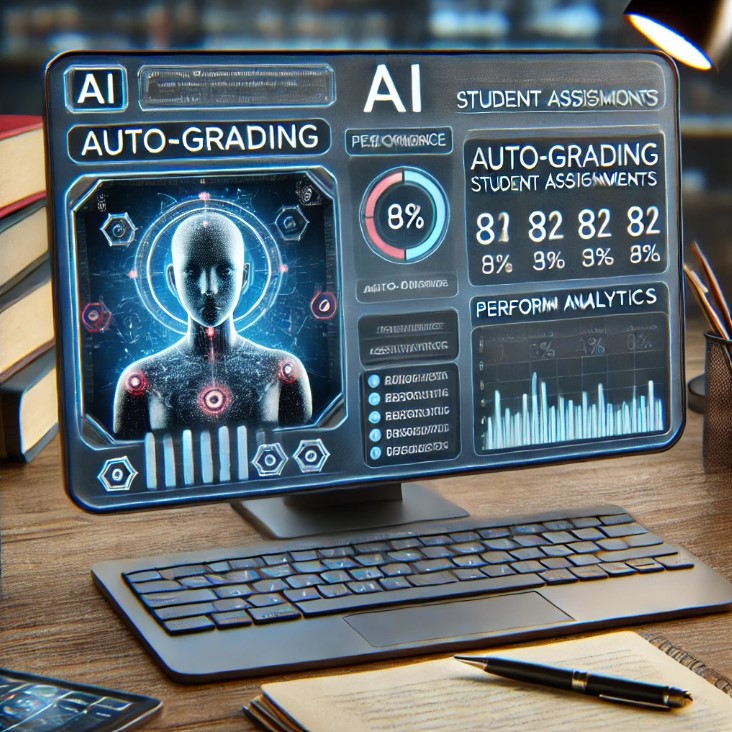AI Tools for ID
How AI Enhances Learning Engagement and Interactivity
Read on to see AI tools categorized by their instructional benefits and how they enhance engagement and interactivity. (There's also suggested AI tools if you want to explore further)
Artificial Intelligence (AI) is transforming education by making learning experiences more engaging, interactive, and personalized. When integrated with Instructional Design (ID) principles, AI can cater to different learning styles, provide instant feedback, and create immersive learning environments.
1. Adaptive AI Tools: Personalizing the Learning Experience
🔹 Examples: Coursera AI, Squirrel AI
Adaptive AI tools customize learning pathways based on student interactions, ensuring that each learner progresses at their own pace.
How Adaptive AI Enhances Engagement:
✔️ Personalized Learning Paths – AI analyzes student performance and adapts content difficulty accordingly.
✔️ Predictive Analytics – These systems identify weak areas and offer tailored content to reinforce understanding.
✔️ Real-time Adjustments – If a student struggles with a concept, AI suggests easier explanations or additional practice.
📌 Example in Action:
Squirrel AI uses deep learning algorithms to adjust content dynamically, ensuring learners get personalized recommendations that keep them engaged and motivated.

2. Interactive AI Tools: Enabling Conversational and Real-Time Engagement
🔹 Examples: ChatGPT, Kuki AI
Interactive AI tools act as virtual tutors, simulating conversations and assisting learners through instant feedback.
How Interactive AI Enhances Learning:
✔️ Chatbot-Assisted Learning – AI chatbots provide instant answers to student queries, reducing waiting time.
✔️ Simulated Conversations – Tools like Kuki AI enable role-playing exercises to enhance soft skills.
✔️ On-Demand Tutoring – ChatGPT can generate explanations, examples, and quizzes in real-time.
📌 Example in Action:
A university uses ChatGPT-powered chatbots to assist students with writing assignments, helping them brainstorm ideas and refine their work.

3. Multimedia AI Tools: Creating Visually Engaging Content
🔹 Examples: Canva AI, Synthesia, Pictory AI
Multimedia tools powered by AI enable educators to create high-quality, interactive content without advanced technical skills.
How Multimedia AI Enhances Engagement:
✔️ AI-Generated Videos – Tools like Synthesia convert text into professional-looking videos with AI-generated avatars.
✔️ Automated Design & Infographics – Canva AI suggests design templates, improving visual appeal.
✔️ AI-Based Video Summarization – Pictory AI extracts key information from videos and creates bite-sized learning modules.
📌 Example in Action:
A teacher converts complex textbook material into a 5-minute AI-generated video using Synthesia, making the content more engaging for students.

4. AI for Assessment and Feedback: Ensuring Continuous Improvement
🔹 Examples: Quillionz, Gradescope
AI-powered assessment tools automate grading, generate instant feedback, and create adaptive quizzes for learners.
How AI Enhances Learning through Assessment:
✔️ Automated Grading – Gradescope uses AI to evaluate written answers, reducing instructor workload.
✔️ AI-Generated Quizzes – Quillionz creates multiple-choice, short answer, and reflection questions from content automatically.
✔️ Detailed Analytics – AI helps track learner progress and suggests areas for improvement.
📌 Example in Action:
A university uses Gradescope AI to analyze handwritten math solutions, identifying patterns in student errors and providing detailed performance insights.

Final Thoughts: The Future of AI in Instructional Design
AI-driven tools are revolutionizing education by making learning:
✅ More engaging – AI-generated videos, gamified quizzes, and interactive chatbots create immersive experiences.
✅ More personalized – Adaptive AI ensures learners receive content tailored to their needs.
✅ More accessible – AI-powered tools support differently-abled learners with speech-to-text and text-to-speech features.
Educators who integrate AI with instructional design unlock a world of possibilities, bridging the gap between technology and pedagogy for a truly modern learning experience. 🚀
📌 What’s Next?
Want to see these AI tools in action? Try integrating one AI tool into your next lesson and observe how it enhances engagement!
